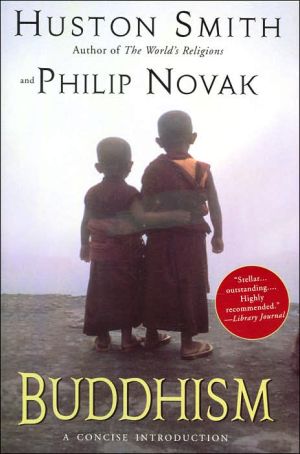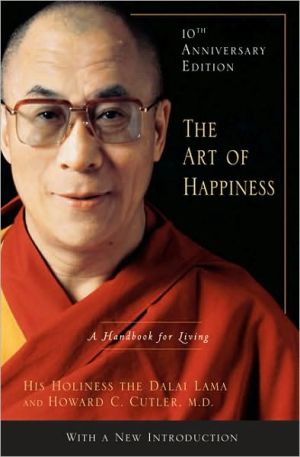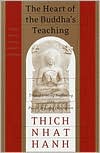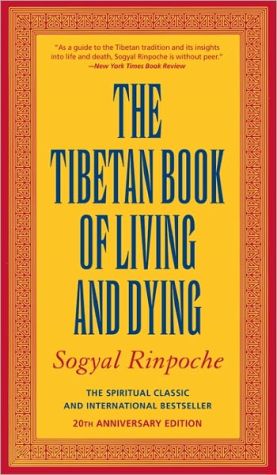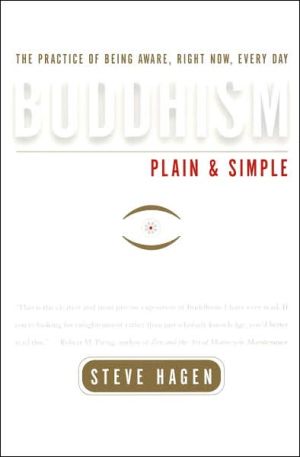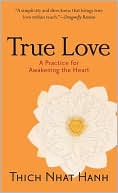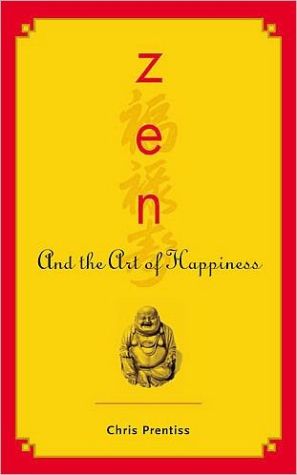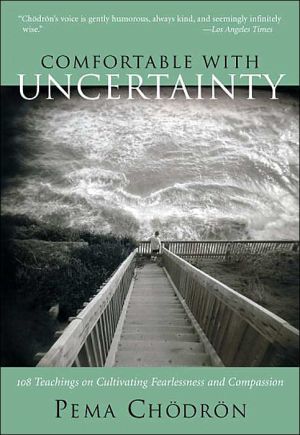Buddhism: A Concise Introduction
A concise and up-to-date guide to the history, teachings, and practice of Buddhism by two luminaries in the field of world religions.
Search in google:
The world's premier authority on religious traditions and his premier successor present a concise and timely guide to the history, teachings, and practice of Buddhism. Publishers Weekly Bookshelves abound with introductions to Buddhism, many written by luminaries and spiritual giants of the faith. But this primer co-written by Smith, whose magnum opus The World's Religions has sold more than two million copies, is distinguished by its gentlemanly erudition and thoughtful attention to Buddhist diversity. The book's first half is an expanded and updated version of the Buddhism sections of The World's Religions and was penned by Smith. Special attention is given to Theravada Buddhism, which "was overshadowed by Mahayana" in the original version; one chapter provides a helpful side-by-side chart illuminating the basic differences between the traditions, while the next features an in-depth discussion of Theravada's influence in South Asia and its emphasis on insight meditation. The primer's all-new second half-written by Smith's former doctoral student Novak-presents the story of Buddhism in the West, discussing its multifaceted presence in the United States. While Novak devotes time to the rise of Buddhism in Germany, England and France, it is clear that he finds the "New Buddhism" of America, with its emphasis on lay involvement, social engagement and the cross-pollination between Buddhist traditions, to be the source of the most exciting contemporary innovations. Smith's helpful afterword gauges the rising importance of Pure Land Buddhism in America, though this vital information should have merited a full chapter. Novak and Smith's collaboration is a fine contribution to the admittedly crowded corpus of introductions to Buddhism: the strokes are broad, the writing style engaging and the chapters short and accessible. (Apr.) Copyright 2003 Reed Business Information.
Buddhism\ A Concise Introduction \ \ By Huston Smith and Philip Novak \ HarperSanFrancisco\ ISBN: 0060506962 \ \ \ Chapter One\ \ The Man Who Woke Up \ Buddhism begins with a man. In his later years, when India was afire with his message and kings themselves were bowing before him, people came to him even as they were to come to Jesus asking what he was. How many people have provoked this question-not "Who are you?" with respect to name, origin, or ancestry, but "What are you? What order of being do you belong to? What species do you represent?" Not Caesar, certainly. Not Napoleon, or even Socrates. Only two: Jesus and Buddha. When the people carried their puzzlement to the Buddha himself, the answer he gave provided an identity for his entire message:\ "Are you a god?" they asked.\ "No."\ "An angel?"\ "No."\ "A saint?"\ "No."\ "Then what are you?"\ Buddha answered, "I am awake."\ His answer became his title, for this is what "Buddha" means. The Sanskrit root budh denotes both "to wake up" and "to know." Buddha, then, means the "Enlightened One," or the "Awakened One." While the rest of the world was wrapped in the womb of sleep, dreaming a dream known as the waking state of human life, one of their number roused himself. Buddhism begins with a man who shook off the daze, the doze, the dreamlike vagaries of ordinary awareness. It begins with a man who woke up.\ His life has become encased in loving legend. We are told that the worlds were flooded with light at his birth. The blind so longed to see his glory that they received their sight; the deaf and mute conversed in ecstasy of the things that were to come. Crooked became straight; the lame walked. Prisoners were freed from their chains, and the fires of hell were quenched. Even the cries of the beasts were hushed as peace encircled the earth. Only Mara, the Evil One, did not rejoice.\ The historical facts of his life are roughly these: He was born around 563 B.C.E. in what is now Nepal, near the Indian border. His full name was Siddhartha Gautama of the Sakyas. Siddhartha was his given name, Gautama his surname, and Sakya the name of the clan to which his family belonged. His father was a king, but as there were then many kingdoms in the subcontinent of India, it would be more accurate to think of him as a feudal lord. By the standards of the day Siddhartha's upbringing was luxurious. "I was delicate, O monks, excessively delicate. I wore garments of silk and my attendants held a white umbrella over me. My unguents were always from Banaras." He appears to have been exceptionally handsome, for there are numerous references to "the perfection of his visible body." At sixteen he married a neighboring princess, Yasodhara, who bore a son whom they called Rahula.\ He was, in short, a man who seemed to have everything: family, "the venerable Gautama is well born on both sides, of pure descent"; fine appearance, "handsome, inspiring trust, gifted with great beauty of complexion, fair in color, fine in presence, stately to behold"; wealth, "he had elephants and silver ornaments for his elephants." He had a model wife, "majestic as a queen of heaven, constant ever, cheerful night and day, full of dignity and exceeding grace," who bore him a beautiful son. In addition, as heir to his father's throne, he was destined for fame and power.\ Despite all this there settled over him in his twenties a discontent that was to lead to a complete break with his worldly estate. The source of his discontent is impounded in the legend of the Four Passing Sights, one of the most celebrated calls to adventure in all world literature. When Siddhartha was born, so this story runs, his father summoned fortune-tellers to find out what the future held for his heir. All agreed that this was no usual child. His career, however, was crossed with one ambiguity. If he remained within the world, he would unify India and become its greatest conqueror, a Chakravartin ("Wheel-Turner"), or Universal King. If, on the other hand, he forsook the world, he would become not a world conqueror, but a world redeemer. Faced with this option, his father determined to steer his son toward the former destiny. No effort was spared to keep the prince attached to the world. Three palaces and forty thousand dancing girls were placed at his disposal; strict orders were given that no ugliness intrude upon the courtly pleasures. Specifically, the prince was to be shielded from contact with sickness, decrepitude, and death; even when he went riding, runners were to clear the roads of these sights.\ One day, however, an old man was overlooked, or (as some versions have it) miraculously incarnated by the gods to effect the needed lesson: a man decrepit, broken-toothed, gray-haired, crooked and bent of body, leaning on a staff, and trembling. That day Siddhartha learned the fact of old age. Though the king extended his guard, on a second ride Siddhartha encountered a body racked with disease, lying by the roadside; and on a third journey, a corpse. Finally, on a fourth occasion he saw a monk with shaven head, ochre robe, and bowl, and on that day he learned of the life of withdrawal from the world in search of freedom. It is a legend, this story, but like all legends it embodies an important truth, for the teachings of the Buddha show unmistakably that it was the body's inescapable involvement with disease, decrepitude, and death that made him despair of finding fulfillment on the physical plane. "Life is subject to age and death. Where is the realm of life in which there is neither age nor death?"\ Once he had perceived the inevitability of bodily pain and passage, fleshly pleasures lost their charm. The singsong of the dancing girls, the lilt of lutes and cymbals, the sumptuous feasts and processions, the elaborate celebration of festivals only mocked his brooding mind ... (Continues...)\ \ \ \ \ Excerpted from Buddhism by Huston Smith and Philip Novak\ Excerpted by permission. All rights reserved. No part of this excerpt may be reproduced or reprinted without permission in writing from the publisher. \ \
ForewordAcknowledgmentsPt. IThe Wheel of the Dharma11The Man Who Woke Up32The Silent Sage143The Rebel Saint214The Four Noble Truths315The Eightfold Path386Other Core Buddhist Concepts: Nirvana, Anatta, the Three Marks of Existence, Dependent Arising, and Emptiness507Theravada and Mahayana: The Great Divide638Vipassana: The Theravadin Way of Insight749Zen Buddhism: The Secret of the Flower8810Tibetan Buddhism: The Diamond Thunderbolt10511The Image of the Crossing11212The Confluence of Buddhism and Hinduism in India117Pt. IIThe Wheel Rolls West12113The New Migration12314America the Buddha Full13615Adaptations: The New Buddhism14316America Starts Meditating I: The Ways of Zen15017America Starts Meditating II: Tibetan Buddhism in Exile16118America Starts Meditating III: The Vipassana Movement172Afterword: The Flowering of Faith: Buddhism's Pure Land Tradition185Notes199Suggestions for Further Reading: An Annotated Guide220Index231
\ David Loy"A valuable primer on Buddhism East and West, old and new."\ \ \ \ \ Inquiring Mind Magazine"This book is an impressive and accessible overview of the core teachings [of Buddhism].\ \ \ Dallas Morning News"Those seeking to dip a toe into Buddhism will find this an inviting pond."\ \ \ \ \ Indianapolis Star"A useful primer for those new to the study of Buddhism."\ \ \ \ \ Publishers WeeklyBookshelves abound with introductions to Buddhism, many written by luminaries and spiritual giants of the faith. But this primer co-written by Smith, whose magnum opus The World's Religions has sold more than two million copies, is distinguished by its gentlemanly erudition and thoughtful attention to Buddhist diversity. The book's first half is an expanded and updated version of the Buddhism sections of The World's Religions and was penned by Smith. Special attention is given to Theravada Buddhism, which "was overshadowed by Mahayana" in the original version; one chapter provides a helpful side-by-side chart illuminating the basic differences between the traditions, while the next features an in-depth discussion of Theravada's influence in South Asia and its emphasis on insight meditation. The primer's all-new second half-written by Smith's former doctoral student Novak-presents the story of Buddhism in the West, discussing its multifaceted presence in the United States. While Novak devotes time to the rise of Buddhism in Germany, England and France, it is clear that he finds the "New Buddhism" of America, with its emphasis on lay involvement, social engagement and the cross-pollination between Buddhist traditions, to be the source of the most exciting contemporary innovations. Smith's helpful afterword gauges the rising importance of Pure Land Buddhism in America, though this vital information should have merited a full chapter. Novak and Smith's collaboration is a fine contribution to the admittedly crowded corpus of introductions to Buddhism: the strokes are broad, the writing style engaging and the chapters short and accessible. (Apr.) Copyright 2003 Reed Business Information.\ \ \ \ \ Library JournalThis stellar book grew out of Smith's The World's Religions (the revised and expanded edition of his classic, The Religions of Man). The first 12 chapters present his outstanding survey of the life and fundamental teachings of the "Perfectly Enlightened One," basic Buddhist concepts, and the major divisions of Buddhism (e.g., Mahayana, Theravada, Zen, and Tibetan), largely unchanged from the chapter on Buddhism in The World's Religions. The remarkably clear, well-written, and understandable text presents an expanded treatment of Theravada Buddhism as well as additional quotations from Buddhist scriptures. Novak, one of Smith's students and a professor of philosophy and religion, is the primary author of the final six chapters, all-new sections on the migration of Buddhism to the West. Impressively, this informative portion with its emphasis on Buddhism in America lives up to the standards of lucidity so evident in earlier chapters. An insightful afterword on Japanese Pure Land Buddhism and an excellent annotated bibliography of suggested readings complete the package. Highly recommended for all collections, even those owning The Religions of Man, serving general readers from high school through research libraries.-James R. Kuhlman, Univ. of North Carolina at Asheville Lib. Copyright 2003 Reed Business Information.\ \
